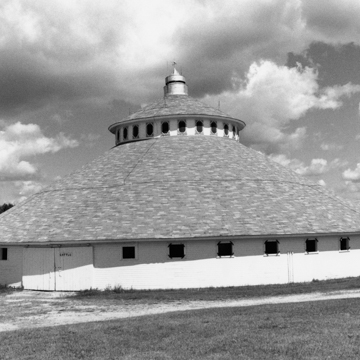The harvest festival invites farmers to gather, showcase their livestock and produce, and recover from the toils of the season. While an important rural social event since ancient times, agricultural fairs in the United States in the late nineteenth century increasingly focused on promoting the latest in farm technology. This trend was encouraged by the creation of the federal Department of Agriculture in 1862 and by the concurrent formation of regional horticultural societies, dairymen’s associations, and breeders’ organizations across the nation. By the late nineteenth century, many county farm associations began establishing permanent fairgrounds. In Marquette County, the local agricultural society began sponsoring an annual fair in 1868 and selected Westfield to serve as the event’s permanent home in the late 1880s.
Local carpenters Johnson and Floeter built this magnificent round barn to display dairy cattle. With its broad, low-pitched, circular roof, the barn seems almost to hug the ground. Square windows rhythmically pierce the building’s wooden walls, lighting and ventilating each stall inside. Two pairs of large sliding double doors opposite each other provide access. More windows ring the large cupola, which is crowned by a circular roof with a wide overhang. A metal ventilator caps the cupola. Based on University of Wisconsin recommendations, round barns became popular in Wisconsin in the early twentieth century, but since they did not lend themselves easily to expansion and mechanization, after 1916 the state agricultural extension service no longer recommended them. Nevertheless, the fact that Marquette County highlighted the design at its fair as late as 1921 suggests that many farmers continued to see the round barn as a useful concept.


